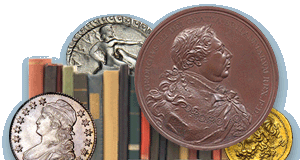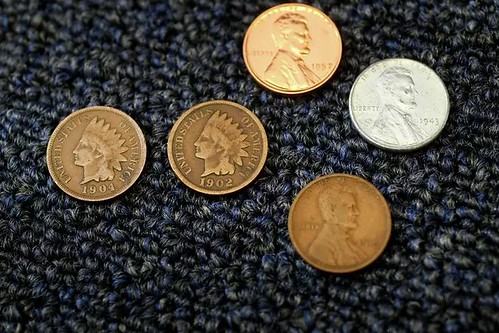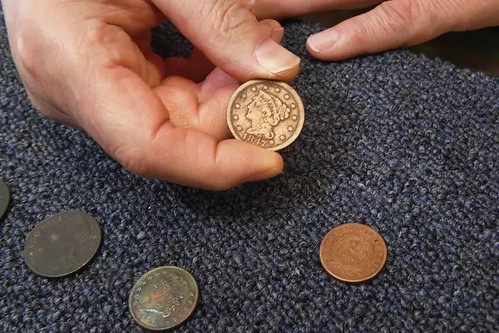
PREV ARTICLE
NEXT ARTICLE
FULL ISSUE
PREV FULL ISSUE
THE CENT'S LEGACYThis article from CT Insider discusses the legacy of the cent and its history, and includes quotes from John Kraljevich and Seymour, CT dealer Ed Zehall. -Garrett We pitch it, pinch it, squeeze and squander it. We stuff it in our loafers and offer it for our thoughts. A bad one always turns up and a pretty one is a splurge we heedlessly indulge. It's the penny — the numismatic dust bunny that collects at the bottom of coffee cans, lodges in the pocket of jeans and tumbles out of the dryer like an errant mitten. Its days are numbered. The Treasury Department stopped making blanks for pennies in May and will cease putting them into circulation next year, the Wall Street Journal reported. Economically, pennies are absurd; they cost four times more to make than what they are worth. But culturally, pennies are soldered into the social, linguistic and even military history of the country. Purging pennies from circulation may be easier than extirpating them from our language and lore. Although most pennies today have little value — tossed into plastic jars and abandoned on cash registers — some pennies, especially those from the early American colonies, can sell for thousands of dollars, according to Gainsville Coins. In 2010, for instance, a New Jersey man sold a 1943-D Lincoln Bronze Cent for $1.7 million, the largest amount ever paid for a penny. As is the case with most valuable coins, that penny is prized because of a mistake. In 1943, the U.S. Mint needed copper for the war effort and consequently struck pennies in a special alloy of zinc-coated steel, said John Kraljevich, director of Numismatic Americana at Stack's Bowers Galleries. But a few slipped by and were struck on the usual copper discs left over from 1942, he said.
For more than 200 years, even before the United States was a nation, pennies represented an ideal — usually liberty, but also unity, symbolized by the 13-striped
Such associations date to antiquity, when, for instance, Alexander the Great issued a coin depicting him as the Greek hero Herakles.
Long before there was a U.S. Mint or the idea of a revolution began to simmer, British pounds, German thalers, Spanish milled dollars, and even some coins produced by individual colonies were the principal mode of financial exchange, according to the U.S. Mint. Each state minted its own pennies, now known as
None of these coins are intended to honor a person. Kaljevich said when the U.S. Senate was debating the 1792 Mint Act, it proposed putting an image of George Washington on a coin, an idea Washington vehemently rejected.
Employing such symbolism could result in the original intent of the coin being misinterpreted, he said. The
To read the complete article, see:
THE BOOK BAZARREWayne Homren, Editor The Numismatic Bibliomania Society is a non-profit organization promoting numismatic literature. See our web site at coinbooks.org. To submit items for publication in The E-Sylum, write to the Editor at this address: whomren@gmail.com To subscribe go to: Subscribe All Rights Reserved. NBS Home Page Contact the NBS webmaster 
|

